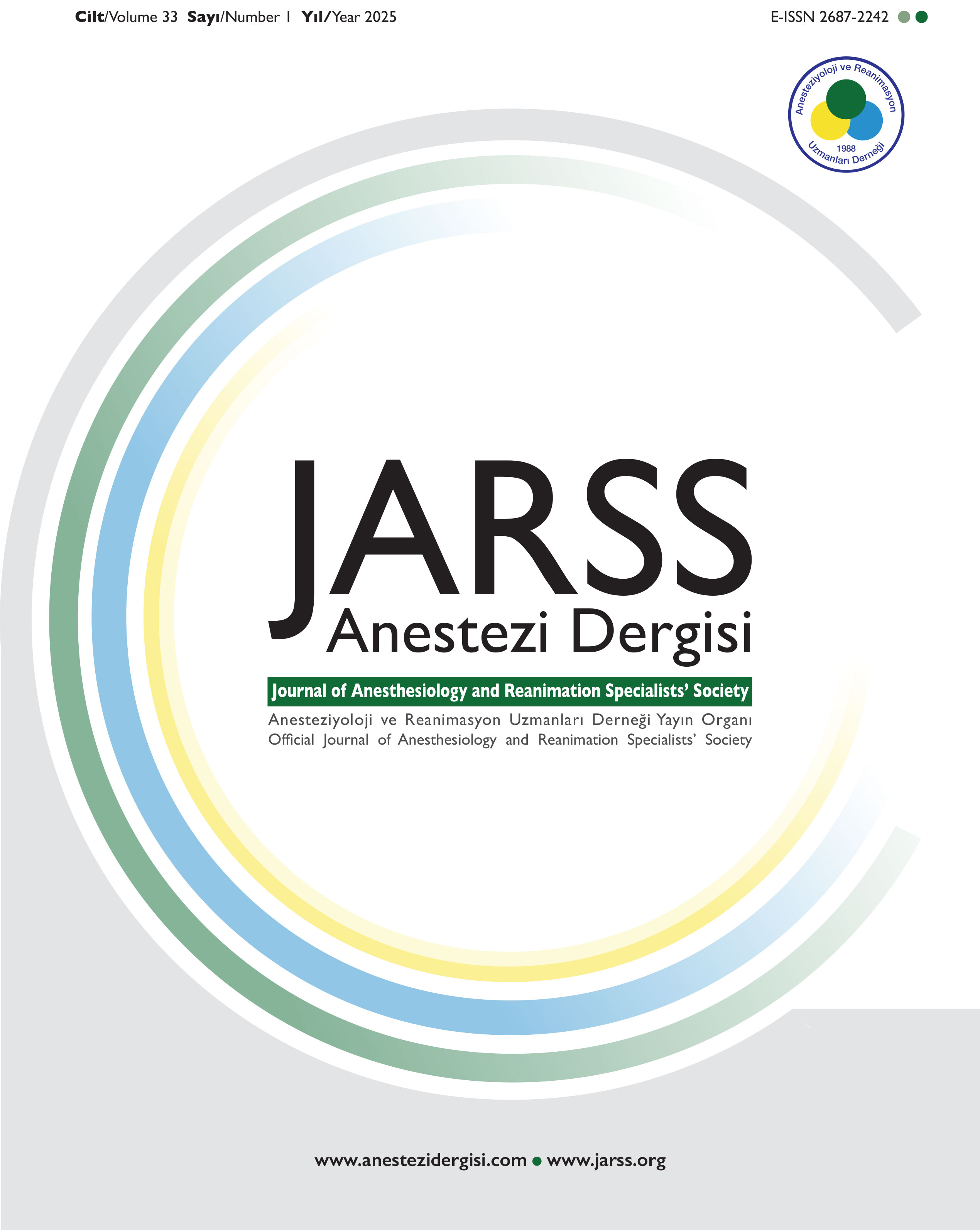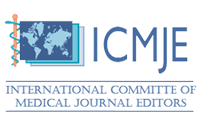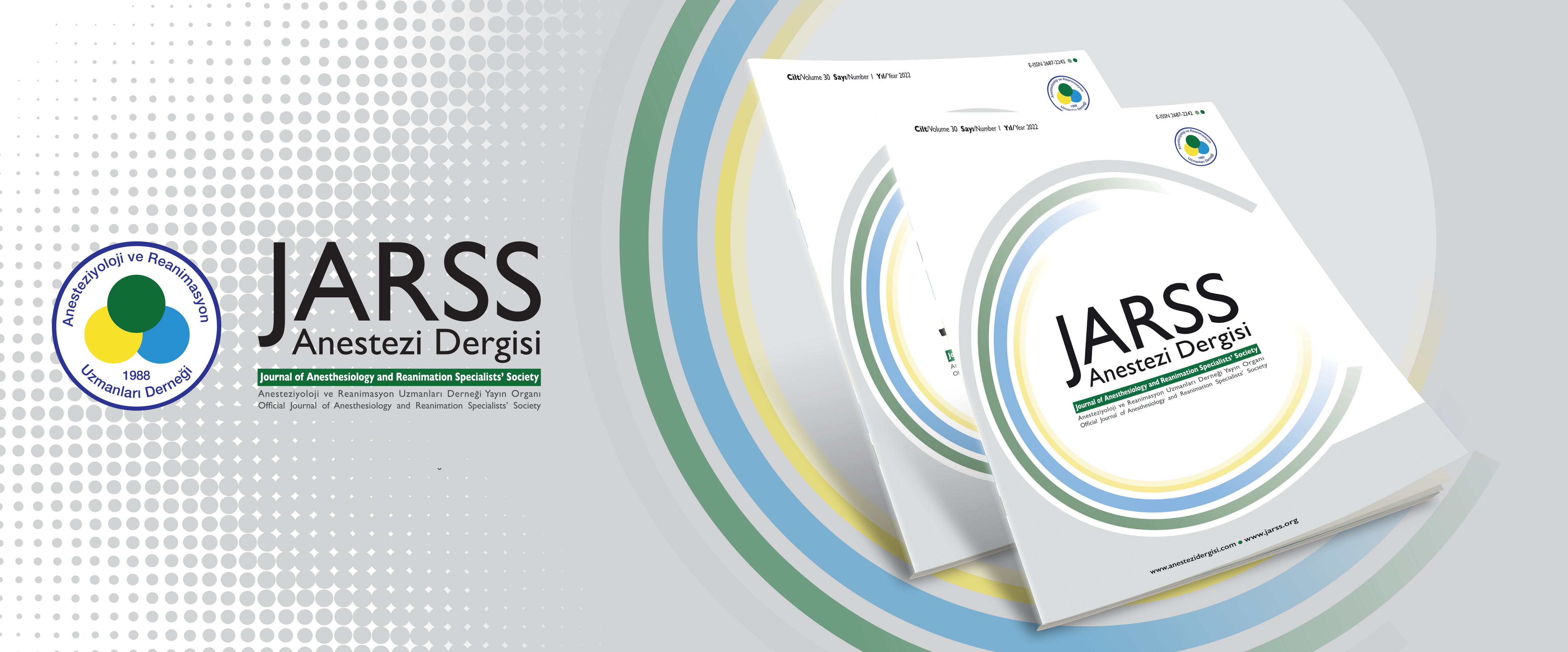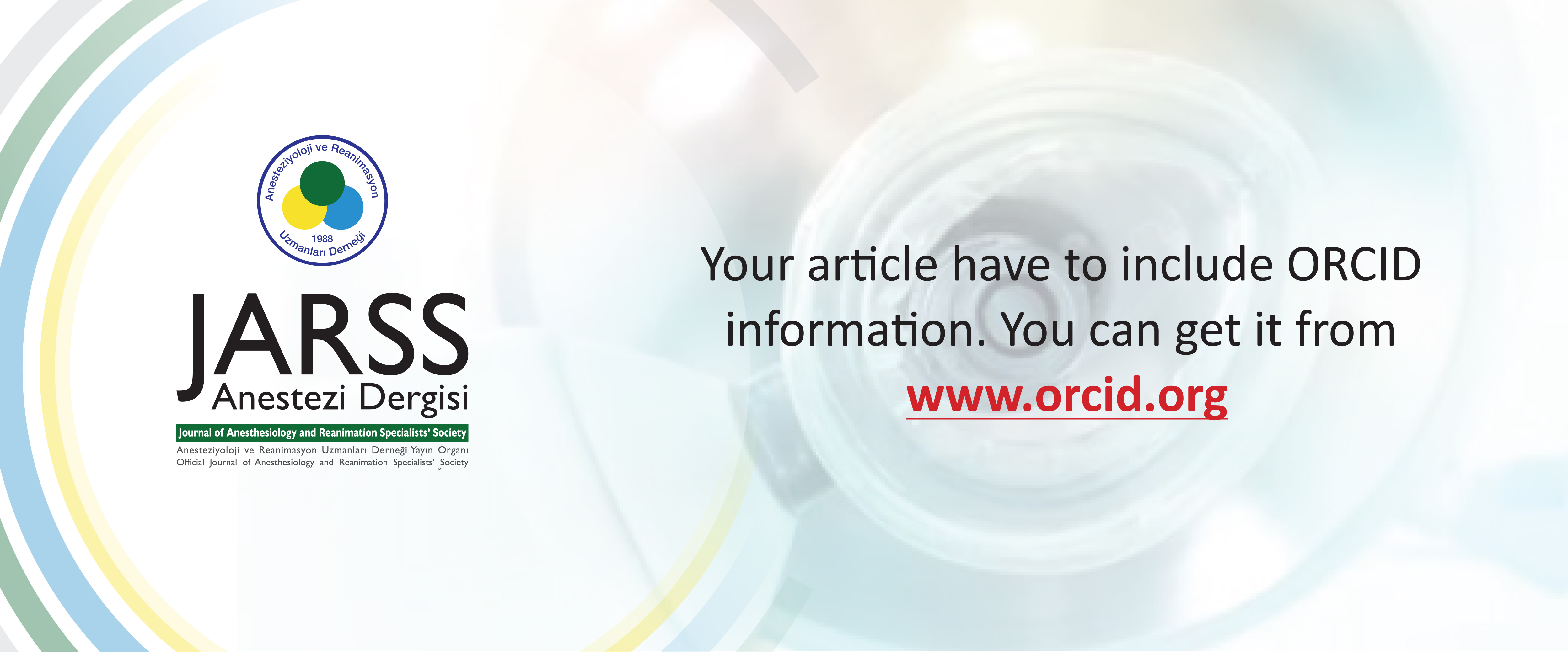Volume: 27 Issue: 1 - 2019
| 1. | Cover Page I (883 accesses) |
| 2. | Contents Pages II - VI (1427 accesses) |
| 3. | From The Editor Page VII (1087 accesses) |
| 4. | Kitap İncelemesi Page VIII (905 accesses) |
| REVIEW | |
| 5. | Meta-Analysis: A Review Article İlker İnce, Elif Ozcimen, Alparslan Turan doi: 10.5222/jarss.2019.76476 Pages 1 - 8 (1829 accesses) Meta-analysis is a frequently used statistical technique which uses to combine data from several studies to evaluate the effectiveness of treatment interventions. By combining results from independent studies, we can both increase power of the study (over individual studies) and improve estimates of the size of the effect. The processes of conducting meta-analysis include developing a protocol, selecting articles, developing inclusion criteria, collecting data, data analysis and interpreting results. A major limitation of the meta-analysis is that only relevant studies which have retrievable data can be included for analysis. This causes concern for publication bias. It is obvious that metaanalysis is a useful scientific method that can provide important information when summarizing medical literature. However, there can be misleading if the studies included are non-similar in their research question or collect different types of outcome data. |
| ORIGINAL RESEARCH | |
| 6. | The Effect of Erector Spinae Plane Block on Postoperative Pain Following Laparoscopic Cholecystectomy: A Randomized Controlled Study Can Aksu, Alparslan Kuş, Hadi Ufuk Yörükoğlu, Cennet Tor Kılıç, Yavuz Gürkan doi: 10.5222/jarss.2019.14632 Pages 9 - 14 (2190 accesses) INTRODUCTION: Erector spinae plane block (ESP) is a novel technique for postoperative pain management. Primary aim of this study was to evaluate efficacy of ultrasound guided ESP for providing postoperative analgesia in laparoscopic cholecystectomy (LC) procedures. METHODS: Forty-six ASA I-II patients aged 20-70, who were scheduled to go under elective LC were included. Patients were randomized into two groups as ESP and Control group. Patients in ESP group received ultrasound (US) guided ESP block with 20ml 0.25 % bupivacaine. An iv patient controlled analgesia device containing morphine was provided for all of the patients in both groups. Morphine consumptions at postoperative 24th hour and postoperative numeric rating scale (NRS) scores for pain were recorded. RESULTS: Mean morphine consumptions at postoperative 24th hour were 7.5mg ± 5.8 in ESP group while it was 13.2 ± 5.6mg in control group (p<0.01). There was also a significant difference between the groups on NRS scores at 12th and 24th hours (p=0.016, p=0.003 respectively). None of the patients in ESP group complained about shoulder pain; but in control group 9 patients reported about this type of pain. DISCUSSION AND CONCLUSION: This study has shown that ESP block at T8 level has reduced the opioid consumption and showed a significant analgesic effect in patients undergoing LC. |
| 7. | The Relationship Between Patient Care Burden And Empathy in Caregivers of Intensive Care Unit Survivors Seyda Efsun Ozgunay, Figen Akça, Derya Karasu, İsa Kilic doi: 10.5222/jarss.2019.83007 Pages 15 - 21 (3295 accesses) INTRODUCTION: The need for home care rises with the increase of the elderly population and the development of technology. The aim of this study was to determine the characteristics of patients requiring home care after intensive care and to investigate the relationship between care burden and empathic tendencies of caregivers. METHODS: Patients who were discharged from the tertiary intensive care unit and who needed home care were included in the study. Demographic data of patients and caregivers were recorded. The patients, re-admitted to the intensive care unit and to the emergency department were determined. The Caregiver Burden Scale and empathic tendency scale were recorded by nurses. RESULTS: One hundred and twenty participants were included in the statistical analyzes. 70.9% of the patients were diagnosed with dementia, Alzheimer's and cerebro vascular events. 51.7% of the patients were women; 50.8% of the patients were admitted to intensive care unit and 71.7% to the emergency department and 37.5% of the patients had decubitus ulcer. There was a statistically significant difference between caregiver burden and caregiver's chronic disease (p = 0.002). It was determined that the caregiving burden increased with the increase in patient’s and caregiver’s age (r = 0.30, p <0.001 and r = 0.21, p <0.05). The duration of care for the patient increased the empathic tendency (r = 0.18 p <0.05 and r = 0.68, p <0.01, respectively). DISCUSSION AND CONCLUSION: Caregivers’s training and motivation with psychosocial support programs can be improved in quality of patient care, it would be useful to review health care policies. |
| 8. | The Effects of Sociodemographic Parameters on Anxiety in Patients who Are Planned Surgery Under General Anesthesia Emine Arık, Habibullah Dolgun doi: 10.5222/jarss.2019.35229 Pages 22 - 29 (1890 accesses) INTRODUCTION: Anxiety usually accompanies the diseases that require surgery. Especially, since serious levels of anxiety affect adversely the surgery, anesthesia and postoperative recovery, it is important to identify the sensitive individuals. With this purpose, we’ve researched the effects of sociodemographic backgrounds of the patients on the development of anxiety METHODS: This research includes 100 patients that had general anesthesia during July - October 2018 period. These patients’ Beck Anxiety Inventory (BAI) and anxiety levels have been measured before the surgery, during discharge and one month after the surgery. The sociodemographic parameters like age, marital status, sex, economic conditions, education and profession have been recorded. RESULTS: Before surgery, 81%of patients faced with anxiety where %20 were at serious levels. Also, before surgery the average BAI score was 15.9±8.9, which dropped to 10.6±7.1 during discharge and to 6.1±3.8 at the first month after operation. Anxiety was more commonly seen among women, especially in housewives, retired and low-incomed people. College graduates’ anxiety levels are found less when compared to other education levels (p<0.05). DISCUSSION AND CONCLUSION: We have detected that the age and marital status of the patients are irrelevant with anxiety and the anxiety levels are highest among women, especially in housewives with no other occupation and the retired ones. On the contrary, less levels of anxiety were seen in college graduates, people with high levels of income, students and civil servants. We believe that the reason behind is that as the education level of a person increases, they can be more comfortably informed and they will have less hesitation. |
| 9. | The Effect of Start Time of Crystaloid Infusion on Blood Pressure in Patients With Hypertension Who Underwent Spinal Anesthesia Kemal Bozkurt, Süheyla Karadağ Erkoç, Çiğdem Yıldırım Güçlü, Dilek Yörükoğlu doi: 10.5222/jarss.2019.03522 Pages 30 - 37 (2780 accesses) INTRODUCTION: In our study we retrospectively investigated the effect of starting time of crystaloid infusion on blood pressure in patients with hypertension who underwent spinal anesthesia. METHODS: A total of 54 patients with hypertension who underwent spinal anesthesia were divided into two groups according to whether bolus crystaloid infusion was performed before or after spinal anesthesia by reviewing observing records. 15 ml kg-1 intravenous of crystaloid infusion was given in average 20 minutes for Group I (n = 27) before spinal anesthesia and for the II. Group (n = 27) after spinal anesthesia. Demographic data, hemodynamic parameters, sensory and motor block levels, vasopressor, drug administration and side effects were recorded. Decrease in systolic blood pressure more than 20 % compared to baseline SBP (Systolic Blood Pressure) or SBP below 90 mmHg was considered hypotension. RESULTS: No difference was detected between the groups in terms of demographic data and operation time. It was found that the incidence of hypotension was 77.9 % in all patients (88.9 % in Group I, 77.8 % in Group II). DISCUSSION AND CONCLUSION: In our study, in patients with spinal anesthesia and hypertension, administration of crystaloids as bolus prior to spinal anesthesia or after spinal anesthesia had similar results on hypotension rates. |
| 10. | A Retrospective Analysis of Airway Management of Acromegalyic Patients Undergoing Pituitary Surgery Tomurcuk Demirci, Şennur Uzun, Başak Akça, Ülkü Aypar doi: 10.5222/jarss.2019.00710 Pages 38 - 43 (1640 accesses) INTRODUCTION: Acromegaly is an endocrinological disease that has morbidity and mortality characterised by high levels of growth hormone (GH) and insülin like growth factor-I (IGF-I). Due to acral changes, typical big nose and lips, macroglossia, enlargement of mandible may occur. Acromegaly may be associated with hypertrophy of pharynx, larynx, tonsils, vocal cords, mucosa and soft tissue. Due to the characteristics of acromegaly, difficult mask ventilation and difficult airway management might be anticipated in these patients. The purpose of this study was to report the challenges and methods used in airway management in acromegaly patients undergoing transsphenoidal pituitary surgery and to compare the success rates of these methods. METHODS: The perioperative records of 120 patients that underwent transsphenoidal resection of pituitary adenoma at our university hospital between 2003-2013 were reviewed. RESULTS: Among the patients studied, difficulty with intubation was encountered in %10 of patients which is consistent with literature. Patients with difficult laryngoscopy were intubated by changing blade, application of external laryngeal pressure or using guide. 1 patient was intubated using fast-trach LMA. Obstructive sleep apnea syndrome (OSAS) is a frequent co-morbidity in acromegalyic patients and this co-occurrence is also associated with difficult intubation. DISCUSSION AND CONCLUSION: Significant correlation was observed between mallampati gradings and difficulty with endotracheal intubation. Also obstructive sleep apnea syndrome (OSAS) which is very frequent in acromegalic patients is also associated with difficulty in airway management. During anesthetic management of these patients, complete preparation for the difficult airway should be done. |
| 11. | Evaluation of in-Hospital Cardiac Arrest Patients Gönül Tezcan Keleş, Eralp Çevikkalp, Arzu Açıkel, İsmet Topçu doi: 10.5222/jarss.2019.33043 Pages 44 - 50 (4093 accesses) INTRODUCTION: Objective: Cardiacarrest, stopping of cardiac functions or inability to pulse in largearteries; It is a sudden and unexpected clinical condition characterized by respiratory and loss of consciousness. The aim of this study was to evaluate prospectively in-hospital cardiac arrestcases. METHODS: Methods: We aimed to analyse the patients diagnosed with cardiac arrest in the hospital in accordance to their demographical variabilities, reversible causes in cardiac arrest,return of spontan circulation time, cardiac arrest rhythm, the duration of the cardiopulmonary resuscitation and blood pressure values. SPSS 15.0 is used to analysed and p<0.05 is accept meaning. RESULTS: Results: We analysed 189 patients. Seventy three of patients is woman(% 37,5), one hundred twenty three of patients is man (% 62,5). The mean age were 58,49±16,78.Mean of woman’s BMI is 27,04 ± 5,78 kg.m-2(n=71), and man’s is 23,60 ± 4,37 kg.m-2 (n=118)(p<0.05).Patients have got %34,9 HT, %28,5 DM, %24,3 CAD,%12,6 COPD,%12,1 CRF,%14,2 SVD,%14,2 HF ve %6,8 MI. DM is seen to be significantly higher in women(p<0,05). CPR time is 38,47 ± 14,71 min.(n = 189). In the 46 of the patients(%24,3), spontaneous circulations were returned, in the 143 of their’s(%75,5) considered to be exitus.ROSC time is 14,80 ± 9,07 min. and mean SBP was 74,35 ± 32,63 mmHg, DBP was 45,00 ±18,34 mmHg. The first arrest rhythm encountered most frequently PEA(%18,5 and asystole(% 77,2)were observed. Reasons that cause arrest can be reversed hypoxia(%10,6) and hypo-hyperkalemia(%8,5) are the most common. DISCUSSION AND CONCLUSION: Most of patients have got unshockable rhythms such as pulseless electrical activity and asystole.The short cardiac arrest duration is favor for survival patients.Cardiac arrest reversible causes should be pre-determined and critical evaluation of patients before cardiac arrest emergency response team should be notified. |
| 12. | The Effect of Neuromuscular Agent on Postoperative Shivering in Patients Undergoing Retrograde Intrarenal Surgery: A Randomized Controlled Clinical Trial İlkay Baran, Menekse Oksar, Savas Altınsoy doi: 10.5222/jarss.2019.47955 Pages 51 - 55 (1066 accesses) INTRODUCTION: It is a very effective mechanism for heat generation and warming in patients with open and movable consciousness. This study aimed to test the hypothesis that intraoperative hypothermia and postoperative shivering may be present in adults using neuromuscular blocker (NMB) during general anesthesia. METHODS: Eighty patients who underwent retrograde intrarenal surgery (RIRS) were randomly divided into two groups to receive either neuromuscular blocking agent (NMB) or not [Group R (NMB+), N = 40; Group K (control), N = 40)]. Laryngeal mask (LMA) was used for airway control in all patients and a standard anesthetic protocol was performed except for NMB administration. Data obtained from the monitoring of skin and internal temperatures and shivering tests were performed prior to anesthesia induction (t0), when given NMB (t1), intraoperative 15 (t2), 30 (t3), and 60 (t4) and postoperative 0 (t5), 10 (t6), 15 (T7), 30 (t8), 60 (t9) minutes. RESULTS: In group R, t0, t1, t2, t3 and t5 skin temperature were significantly higher than group K, but there was no difference between the groups in terms of internal temperatures. (t5, t6 and t7 in the proportion of those who have tremors in group R was significantly higher than group K (CI-Square p <0.05). In both groups, there is a statistically significant difference in skin temperature compared to t0. According to this, there was a significant difference in t7,8,9 in Group K and t1 in group R according to t0. In Group R, the internal temperature was significantly lower in t3 than in t2, and t3 in group K was significantly lower than t1 and t2. DISCUSSION AND CONCLUSION: An understanding of postoperative shivering and the mechanisms that cause it is an important issue. A possible association with the use of neuromuscular blocker over hypothermia is worth investigating for patients with intraoperative heat management and low respiratory and cardiac reserve. The data obtained from this study did not support a relationship between NMB use and intraoperative hypothermia, but clearly showed a relationship with postoperative shivering. However, there is a need to study the possible effects of neuromuscular blockers on body temperature and peripheral defense mechanisms in adults, and perhaps also central mechanisms. |
| 13. | In-Hospital Mortality and Complications Following Coronary Artery Bypass Surgery; is it Possible to Predict with Preoperative Values? Eda Balcı, Aslıhan Aykut, Aslı Demir, Ülkü Sabuncu, Rabia Koçulu, Ümit Karadeniz doi: 10.5222/jarss.2019.32042 Pages 56 - 62 (1072 accesses) INTRODUCTION: The aim of this study is to evaluate short-term complications and mortality in patients undergoing isolated coronary artery bypass surgery with preoperative predictors commonly used in the literature. METHODS: 518 patients who underwent coronary artery bypass surgery using cardiopulmonary bypass pump were retrospectively investigated. Preoperative fasting blood glucose, hemoglobin, neutrophil, platelet count, erythrocyte distribution width, mean platelet volume, platelet lymphocyte ratio, neutrophil lymphocyte ratio, metabolic syndrome criteria were recorded. These preoperative datas have been investigated in relation to postoperative short term complications and mortality. RESULTS: 30-day mortality was observed in 26 of 518 patients (5%). Mortality was associated with advanced age, presence of hypertension, fasting blood glucose and platelet lymphocyte ratio. However, in multivariate analyzes, only advanced age was seen as independent predictor of mortality. At least one postoperative complication was seen in 66 patients (12,7%). Age, fasting blood glucose, hemoglobin value, mean platelet volume, neutrophil lymphocyte ratio were found to be associated with complication development. However, in multivariate analyzes only age was seen as independent predictor of complications. DISCUSSION AND CONCLUSION: It is not possible to predict mortality and complications in patients undergoing coronary artery bypass surgery only with preoperative datas. |
| CASE REPORT | |
| 14. | Anesthetic Management of a Child with Cerebro-Oculo-Facio-Skeletal Syndrome Alev Şaylan, Nalan Çelebi, Özgür Canbay doi: 10.5222/jarss.2019.99608 Pages 63 - 65 (1240 accesses) Cerebro-oculo-facio-skeletal syndrome (COFS, Pena-Shokeir syndrome Type II, Cockayne syndrome Type II) is a rare progressive syndrome with autosomal recessive transition that may cause death in childhood. We aimed to present the anesthesia management in congenital cataract surgery in a patient with COFS in the present study. |
| 15. | Successful Anesthetic Management of a 14 Year Old Boy Undergoing Tricuspid Valvular Surgery for Carcinoid Heart Disease Aynur Camkıran Fırat, Murat Özkan, Ilkay Erdoğan, Pınar Zeyneloğlu doi: 10.5222/jarss.2019.77487 Pages 66 - 69 (1018 accesses) Introduction We present our strategy for successful management of pediatric patients with carcinoid heart disease when weaning from cardiopulmonary bypass (CPB) during tricuspid valvular surgery. Case Presentation The patient was a 14-year-old boy who had been diagnosed with a grade IV neuroendocrine tumor. For surgery, the patient was premedicated with oral midazolam, hydroxyzine, somatostatin analogue (Octreotide®), and pheniramine maleate. Octreotide® and serotonin 5-hydroxytryptamine3 receptor antagonist were also added during the rewarming period. Dopamine was continued as an infusion (5 µg kg-1 min-1) for the first day. Bioprosthetic valve placement and transannular right ventricular outflow tract patch augmentation were performed. He was extubated within 20 hours and was discharged from the hospital at 6 days post-surgery. Discussion: Appropriate premedication is recommended, as this can prevent emotional stress, induction can be carried out safely using a combination of opioids. Drugs that cause histamine release (morphine, meperidine, atracurium) should be avoided and weaning from CPB should be done with care to avoid hemodynamic instability and carsinoid crisis. |
| 16. | Anesthetic Management of A Pregnant Woman With Limb-Girdle Muscular Dystrophy Resul Yılmaz, Ruhiye Reisli, Osman Mücahit Tosun, Ahmet Topal, Sema Tuncer Uzun doi: 10.5222/jarss.2019.43531 Pages 70 - 73 (2020 accesses) Limb-girdle muscular dystrophies (LGMD) are a group of heterogeneous diseases which are autosomal dominant or recessively inherited, characterized by a progressive weakness and atrophy around the pelvis and in muscles of the shoulder. Not only has regional anesthesia many advantages both for the mother and the baby during C-section procedures but also it enables effective anesthesia for patients with a history of muscular diseases. Moreover, it is possible to evade foreseeable complications of general anesthesia for such patients as well. Although LGMD is not common, it has specific anesthesia management issues. In this case, we aimed to present our clinical experience in a pregnant women with LGMD. |
| LETTER TO THE EDITOR | |
| 17. | Superficial Cervical Plexus Block Produces Effective Analgesia in Auricular Reconstruction Using Postauricular Flap in a Pediatric Patient Hadi Ufuk Yörükoğlu, Yavuz Gürkan doi: 10.5222/jarss.2019.55265 Pages 74 - 75 (1077 accesses) Abstract | |

















